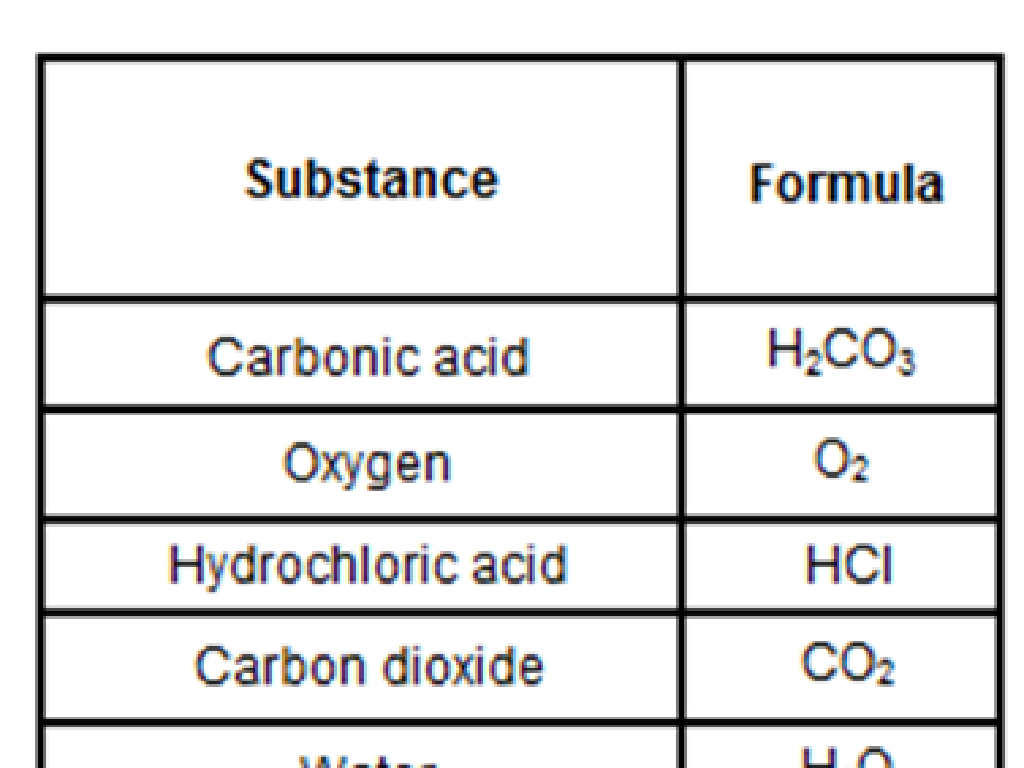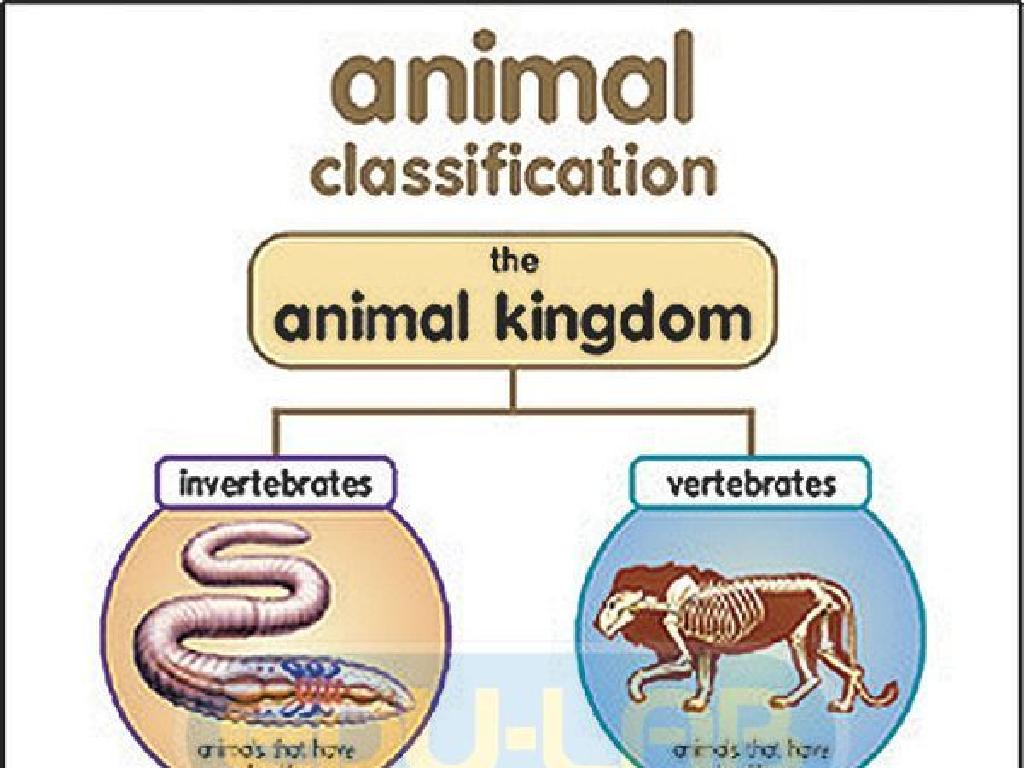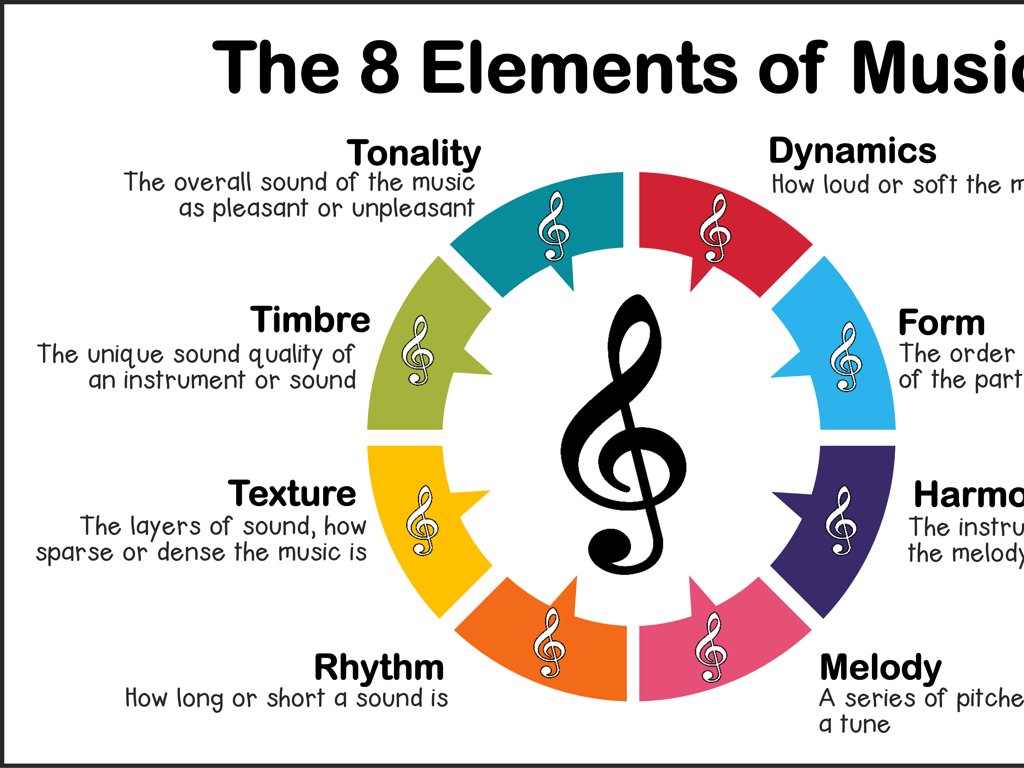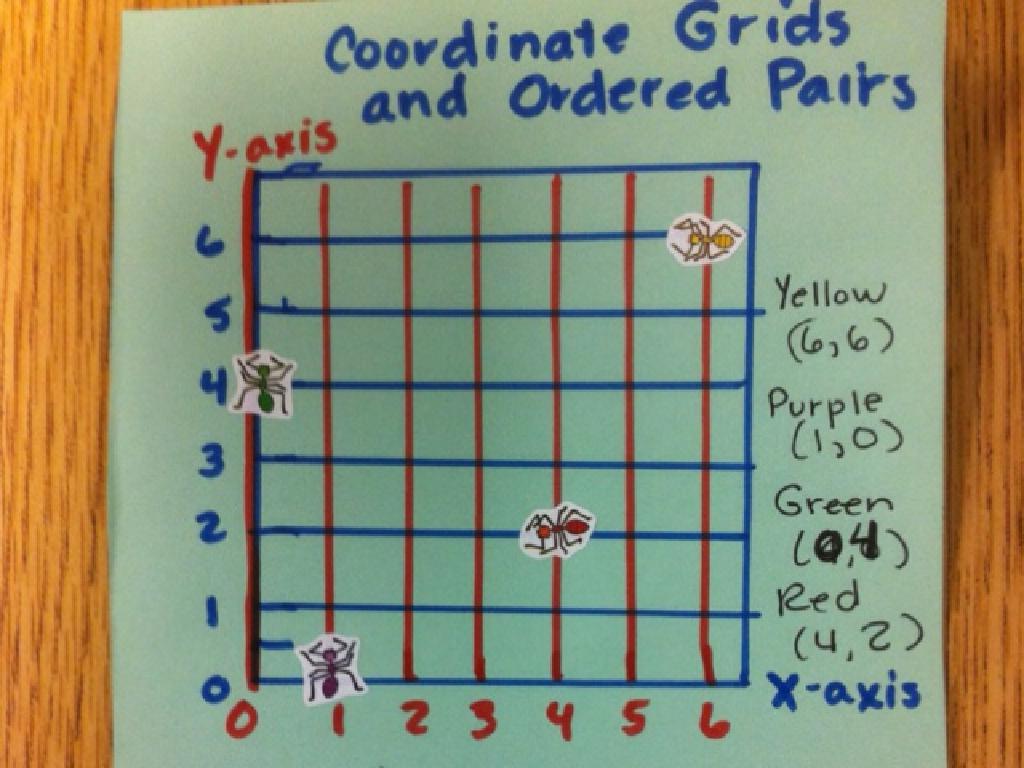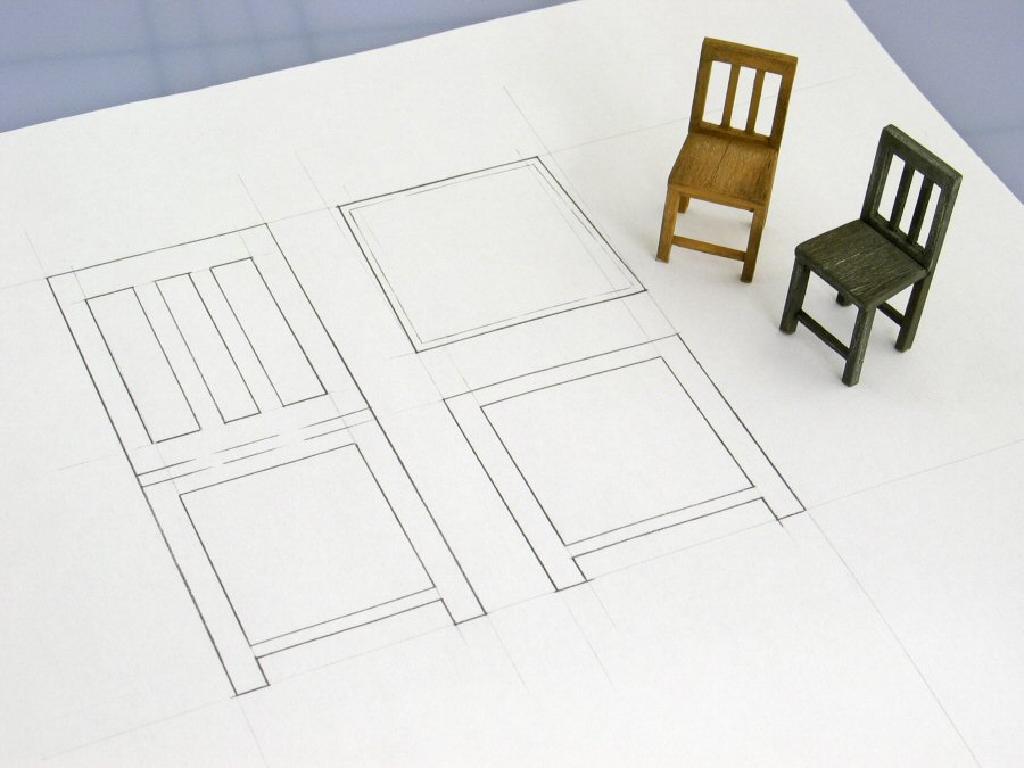Surface Area Of Triangular Prisms
Subject: Math
Grade: Sixth grade
Topic: Surface Area And Volume
Please LOG IN to download the presentation. Access is available to registered users only.
View More Content
Welcome to Surface Area!
– What is Surface Area?
– The total area of all the faces of a 3D object.
– Surface Area in Daily Life
– Used in packaging, construction, and design.
– Exploring Triangular Prisms
– A prism with triangular bases.
– Calculating Surface Area
– Add areas of triangles and rectangles together.
|
Begin the lesson by defining surface area as the sum of the areas of all the faces of a three-dimensional object. Highlight the relevance of surface area in real-world applications such as determining the amount of paint needed for a wall or material for a tent. Introduce the concept of a triangular prism, emphasizing its triangular bases and rectangular sides. Guide students through the process of calculating the surface area by breaking down the prism into its geometric components (triangles and rectangles) and summing their areas. Provide examples and encourage students to visualize the process to enhance understanding.
Exploring Surface Area of Triangular Prisms
– Define Surface Area
The total area of all the faces of a 3D object.
– Surface Area vs. Volume
Surface area is the ‘skin’ covering the shape, volume is the ‘space’ inside it.
– Daily Life Surface Area Examples
Wrapping paper on a gift, paint needed for walls.
– Calculating Triangular Prism Surface Area
Add areas of triangles and rectangles forming the prism.
|
Begin with a clear definition of surface area, ensuring students understand it’s the sum of the areas of all the faces of a three-dimensional object. Contrast surface area with volume to highlight the difference between the ‘covering’ and the ‘space inside’ a shape. Provide relatable examples such as calculating the amount of wrapping paper needed for a gift or paint for walls to make the concept tangible. Conclude by introducing the formula for the surface area of a triangular prism, which combines the areas of the triangular bases and the rectangular sides. Encourage students to visualize by drawing or using a model of a triangular prism.
Exploring Triangular Prisms
– What is a triangular prism?
– A 3D shape with triangular bases connected by rectangular faces.
– Parts: Bases, Faces, Edges, Vertices
– Bases are triangles, faces are rectangles, edges are the lines where faces meet, vertices are corners.
– Real-world triangular prism examples
– Tents, Toblerone bars, and roofs often have this shape.
– Importance of understanding prisms
|
This slide introduces students to the concept of triangular prisms, a fundamental 3D shape in geometry. Start by defining a triangular prism and then discuss its parts, including the two triangular bases, the rectangular faces that connect them, the edges where two faces meet, and the vertices or corners of the shape. Provide relatable real-world examples to help students visualize and understand the concept better. Emphasize the importance of recognizing these shapes in everyday objects to appreciate the practical applications of geometry. Encourage students to bring in or sketch examples of triangular prisms they encounter in their daily lives.
Calculating Surface Area of Triangular Prisms
– Formula for surface area
Surface Area = (Base Area x 2) + (Perimeter of Base x Height)
– Dissecting the formula
Base Area: area of the triangle, Perimeter: sum of triangle sides, Height: prism’s length
– Net of a triangular prism
A net is a 2D shape that can be folded to form the 3D prism
– Practice with examples
Use the formula to calculate surface area with different prism sizes
|
Introduce the formula for calculating the surface area of a triangular prism and ensure students understand each component of the formula. Explain that the base area refers to the area of the triangle at the end of the prism, and the perimeter is the sum of the sides of this triangle. The height in the formula is the length between the triangular bases. Show the net of a triangular prism to help students visualize how the 2D shape forms the 3D object. Provide examples of different triangular prisms and guide students through the process of using the formula to calculate the surface area. Encourage students to work on practice problems to apply what they’ve learned.
Let’s Practice: Surface Area of Triangular Prisms
– Example 1: Calculate Surface Area
– Follow step-by-step solution
– Break down the problem, find areas of triangles and rectangles
– Discuss the solution with a classmate
– Explain your approach, ask questions, and listen
– Understand the method together
– Share insights and clarify any doubts
|
This slide is designed as a class activity to reinforce the concept of finding the surface area of triangular prisms. Start with a worked example on the board, guiding students through each step of the calculation process. Encourage students to pay close attention as they will need to replicate this process. After demonstrating the example, have students pair up to discuss the solution. This peer interaction will help them articulate their understanding and address any misconceptions. As a teacher, circulate the room to facilitate discussions, answer questions, and ensure that each student is engaged. Possible activities include having different pairs solve for different prisms, comparing answers, and discussing any variations in their approaches.
Try It Yourself: Surface Area Practice
– Solve Practice Problem 1
Calculate the surface area of a triangular prism with given dimensions.
– Tackle Practice Problem 2
Find the surface area for a different set of measurements.
– Write down your solutions
– Share answers with the class
Discuss how you found your answers and learn from others.
|
This slide is designed to engage students in active practice of calculating the surface area of triangular prisms. Provide two practice problems with different dimensions for the triangular bases and prism heights. Encourage students to apply the formula for surface area of triangular prisms: surface area = base area + lateral area. After solving the problems, students should write down their step-by-step solutions. Then, create an interactive session where students can share their answers with the class, explaining their methods and reasoning. This will help reinforce their understanding and allow them to learn from each other’s approaches. Possible activities could include peer review of solutions, group discussions, or presenting their solutions on the board.
Avoiding Common Mistakes: Triangular Prisms
– Include all faces in calculations
– Remember to calculate the area for both triangular faces and three rectangular faces.
– Differentiate area from perimeter
– Area is the space inside a shape, perimeter is the distance around it.
– Use formulas correctly
– Ensure you’re using the correct formula for surface area: SA = bh + 2ls + lb.
– Review and double-check work
|
When teaching students about the surface area of triangular prisms, it’s crucial to highlight common errors and provide strategies to avoid them. Emphasize the importance of calculating the area for all faces of the prism, including the two triangular bases and three rectangular sides. Clarify the difference between area and perimeter to prevent confusion. Provide a clear formula for surface area calculation and encourage students to use it correctly. Lastly, instill the habit of reviewing and double-checking their work to catch any mistakes. Incorporate practice problems that specifically address these common mistakes to reinforce the correct methods.
Class Activity: Build & Calculate
– Gather materials: paper, scissors, tape
– Follow instructions to build a prism
Use the steps provided to create a 3D model
– Calculate your prism’s surface area
Use the formula SA= bh + 2ls + lb to find the area
– Discuss results with the class
Share your findings and compare with classmates
|
This hands-on activity is designed to help students understand the concept of surface area through a practical exercise. Provide students with paper, scissors, and tape to construct their own triangular prisms. Once built, guide them through the process of calculating the surface area using the formula SA = base area (bh) + 2 * lateral surface area (ls) + length * base (lb). Encourage students to work in pairs or small groups to foster collaboration. After calculations, have a discussion session where students can present their prisms, explain their calculation process, and compare results with their peers. This will reinforce their understanding and allow them to see variations in surface area with different-sized prisms.
Review: Surface Area of Triangular Prisms
– Recap surface area calculation
– Surface area = sum of areas of all faces
– Ask your questions now
– Let’s clarify any confusions
– Addressing misunderstandings ensures mastery
– Review with examples
– Example: Find the surface area of a prism with base edges 3cm, 4cm, and height 5cm
|
This slide is aimed at reviewing the concept of finding the surface area of triangular prisms. Begin by summarizing the steps to calculate the surface area, which is the sum of the areas of all the faces of the prism. Encourage students to ask any questions they have about the process to ensure they understand. Address any common confusions, such as mixing up the base area with the lateral surface area. Use an example to demonstrate the calculation process. For instance, calculate the surface area of a triangular prism with given dimensions, and walk through each step. This will help students see the practical application of the formula. The goal is to solidify their understanding and prepare them for more complex problems.
Homework: Mastering Surface Area
– Complete the surface area worksheet
– Focus on triangular prisms
– Study for the upcoming quiz
– Review both surface area and volume topics
– Compile questions for next class
– Don’t hesitate to note down any uncertainties
– Practice with additional problems
|
This homework assignment is designed to reinforce the students’ understanding of the surface area of triangular prisms. The worksheet provided should cover various problems, ensuring that students practice calculating the surface area of different triangular prisms. Encourage students to study for the quiz by reviewing their notes, textbook, and any classwork examples. Remind them that understanding both surface area and volume is crucial for their quiz. Lastly, urge students to write down any questions or areas of confusion as they work through the homework to address in the next class. This will help clarify any misunderstandings and solidify their grasp of the concepts.

